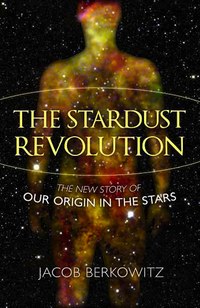Review: The Stardust Revolutionby Jeff Foust
|
| Berkowitz argues that we’re undergoing a scientific revolution as profound as the Copernican Revolution four centuries ago that shifted the Earth out of the center of the universe and the Darwinian Revolution of the nineteenth century. |
Today, by contrast, astrobiology is well in the mainstream, with all the trappings of a modern-day scientific field: its own conferences, journals, and academic programs. It’s also been fully embraced by NASA who, while not funding SETI research, has supported a wide range of other astrobiological studies, and whose series of Mars missions, including the latest rover, Curiosity, have been built on studying whether Mars might once have been—or could still be today—hospitable to life. The recent report by the Mars Program Planning Group, chartered by NASA earlier this year to revamp the agency’s long-term Mars exploration program, supported mission architectures that advance the theme of “Search for Signs of Past Life,” primarily through the return to Earth of Martian samples from sites of “astrobiological significance.”
That change in perceptions towards astrobiology is due in part to the advances chronicled by Jacob Berkowitz in his book The Stardust Revolution. In it, he argues that we’re undergoing a scientific revolution as profound as the Copernican Revolution four centuries ago that shifted the Earth out of the center of the universe and the Darwinian Revolution of the nineteenth century that introduced revolution. This new revolution, he argues, is the merging of the first two, combining astronomy and biology: an argument expertly covered in the book, even if Berkowitz is guilty of a degree of overreach.
Berkowitz takes a three-part approach in The Stardust Revolution to describe this scientific revolution. In the first part, he examines how astronomers’ understanding of the stars changed over the centuries. In the early nineteenth century, Auguste Comte argues that the stars were essentially inscrutable: we would never be able to understand their compositions, for we could not experiment on them in the laboratory. The development of spectroscopy changed that, allowing astronomers to identify elements in our Sun and, later, other stars. By the 1950s astronomers found that stars were cosmic forges, turning hydrogen and helium into heavier elements. (One of the key astronomers involved in that work was Sir Fred Hoyle, who of best known for his opposition to the Big Bang model for the formation of the universe; ironically, early advocates of the Big Bang model argued erroneously that the initial explosion, and not stars, created the heavier elements.)
In the second part of the book, Berkowitz goes from the creation of elements to chemistry, with the discovery—thanks in large part to radio astronomy—of increasingly complex compounds, from water to amino acids, in the cosmos. This continued into the third part of the book, noting studies of meteorites have also turned up complex organic compounds in their interiors, evidence that the building blocks of life itself can be formed beyond the Earth—and that, perhaps, the Earth itself was seeded with these compounds early in its history. He also looks in the final part of the book at the explosion of extrasolar planet discoveries since the mid-1990s, key to the prospects of life beyond Earth.
Berkowitz expertly weaves together various threads to create a bigger story about our changing understanding regarding the origins of life here and elsewhere in the universe. He takes the reader along as he goes to mountaintop observatories and conferences to understand the state of research, and the scientists he interviews, as well as others from the historical record, become fascinating characters in their own right.
| What The Stardust Revolution demonstrates is that those essential building blocks are commonplace, but the real revolution—the discovery of life beyond Earth—is yet to come. |
However, there’s a degree in overreach in the title of the book, and the author’s claim that we are in the midst of a scientific revolution as profound as the Copernican and Darwinian ones that preceded it. While Berkowitz sees this revolution as the intersection of astronomy and biology, his book emphasizes the astronomical, particularly the cosmochemical, side of the revolution. It’s a big advance to demonstrate that the chemical building blocks for life are commonplace in the universe, but these are only necessary, and not sufficient, conditions for the formation of life (however “life” is defined, itself a thorny issue that Berkowitz touches upon in the book’s final chapter.)
The advance of astrobiology in the last two decades can be explained in part by the largely astronomical studies described in The Stardust Revolution, but it’s also due to advances in biology, such as the discovery of “extremophiles” that thrive on Earth in conditions of temperature, salinity, and acidity long thought hostile to life. These extremophiles show that, at least on Earth, where the basic building blocks of life—water, organics, and energy—exist, so can life. That raises the prospects for life elsewhere in our solar system, such as below the surface of Mars or in the oceans of Europa, as well as in solar systems around other stars. What The Stardust Revolution demonstrates is that those essential building blocks are commonplace, but the real revolution—the discovery of life beyond Earth—is yet to come.
